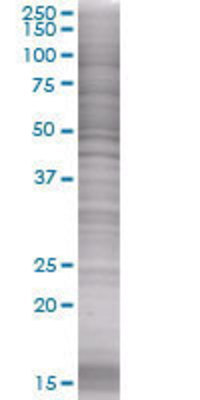| Gene Symbol |
TNFRSF11B
|
| Entrez Gene |
4982
|
| Alt Symbol |
OCIF, OPG, TR1
|
| Species |
Human
|
| Gene Type |
protein-coding
|
| Description |
tumor necrosis factor receptor superfamily, member 11b
|
| Other Description |
osteoclastogenesis inhibitory factor|osteoprotegerin|tumor necrosis factor receptor superfamily member 11B
|
| Swissprots |
Q53FX6 Q9UHP4 O00300 B2R9A8 O60236
|
| Accessions |
AAR23265 BAA32076 EAW91978 O00300 AB002146 BAA25910 AF134187 AAF20168 AK223155 BAD96875 AK308524 AK313710 BAG36455 BC011023 BC030155 AAH30155 BM748946 BQ000897 CK903484 DA477521 DQ892264 ABM83190 DQ895466 ABM86392 U94332 AAB53709 NM_002546 NP_002537
|
| Function |
Acts as decoy receptor for TNFSF11/RANKL and thereby neutralizes its function in osteoclastogenesis. Inhibits the activation of osteoclasts and promotes osteoclast apoptosis in vitro. Bone homeostasis seems to depend on the local ratio between TNFSF11 and TNFRSF11B. May also play a role in preventing arterial calcification. May act as decoy receptor for TNFSF10/TRAIL and protect against apoptosis. TNFSF10/TRAIL binding blocks the inhibition of osteoclastogenesis. {ECO:0000269|PubMed:22664871, ECO:0000269|PubMed:9168977}.
|
| Subcellular Location |
Secreted.
|
| Tissue Specificity |
Highly expressed in adult lung, heart, kidney, liver, spleen, thymus, prostate, ovary, small intestine, thyroid, lymph node, trachea, adrenal gland, testis, and bone marrow. Detected at very low levels in brain, placenta and skeletal muscle. Highly expressed in fetal kidney, liver and lung.
|
| Top Pathways |
Cytokine-cytokine receptor interaction, Osteoclast differentiation
|

